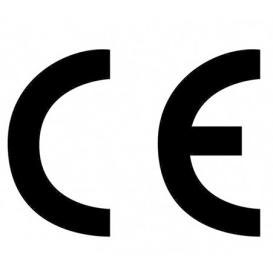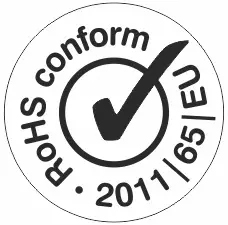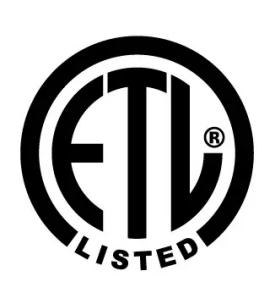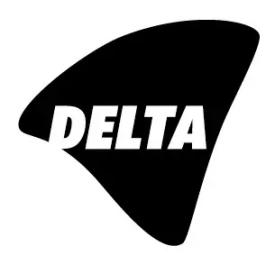
CE is an acronym for "Conformite Europeene" in French, which means "conforms to European (standard)". CE logo is a legal mandatory logo in the EU market. No matter the products produced by enterprises within the EU or products produced by other countries, if they want to distribute freely in the EU market, they must be labeled with the CE logo to show that the products meet the basic requirements of the EU "The New Approach to technical harmonisationand standardisation” Directive.
The CE logo is recognized as a legal qualification standard in the laws of the European Union. The CE mark on a product means that the manufacturer declares that this product complies with the basic requirements stipulated in the relevant laws of European health, safety and environmental protections. Therefore, the product is safe for users (people), pets (livestock and poultry), estate (property), and the environment (natural environment).
According to EU law, manufacturers and importers are responsible for verifying that their products meet the requirements of the relevant EU directives. This means that the manufacturers (or importers) must go through various tests to ensure that the product meets the relevant requirements. The manufacturers or importers must keep a file of technical documents, which include detailed descriptions, drawings, and test reports of the equipment. When the manufacturer or his authorized representative believes that the product has met the relevant requirements, they need to sign a Declaration of Conformity, and then they can mark the product with the CE mark.
The government of each EU member state is responsible for monitoring whether the products sold on the market comply with the relevant product safety standards. Once the product is spot-checked, the manufacturer must immediately provide the customs or other inspection departments with relevant evidence or technical files to prove how the product meets the requirements. If the product does not meet the requirements of the relevant directives or the manufacturer cannot provide the required documents, the product will be banned from selling, and even the products on the market will be required to be fully recovered.
The scope of the CE mark covers the EU and the member states to which the European Free Trade Agreement belongs. Products that met the requirements of the CE Directive must pass the CE inspection. The countries currently mandated by the CE Directive apply to the European Union’s 27 countries and the EFTA European Free Trade Agreement.
Electronic and electric products must comply with the requirements of the Low Voltage Directive (LVD), Electromagnetic Compatibility (EMC), Energy Related Products (ErP) and RoHS 2.0 directives in order to paste the CE mark. The EU enforced the latest construction product regulations (305/2011/EU-CPR) from July 1, 2013. The CPR regulations are stricter than the old CPD construction product directive (89/106/EEC-CPD) and are more restrictive to trade. Manufacturers, importers, distributors and other links related to product distribution have made new requirements. Construction products involving health, safety and environmental protection will be labeled with the CE mark before entering the EU market. The implementation of EU CPR regulations has clear requirements for construction cables in the EU. For construction cables, CE marking and product performance declarations will become mandatory requirements.
Introduction of Cable CE Certification Ctandards: The EN50575:2014+A1:2016 standard is to meet the fire resistance requirements of electric power, control and communication cables, and fiber optic cables during construction. EN50575:2014+A1:2016 has replaced EN 50575:2014.
EN 50575:2014+A1:2016 is to meet the fire resistance requirements of electric power and control box communication cables during construction. It officially came into effect in June 2016 and was converted into the EU CE-CPR certification coordination standard. In June 2017, the transition period ended. The new standard itself has a major technical modification: it is issued at the national level and replaces any conflicting national standards.
Cable CE Certification Test Requirements: The European Union EN13501-6 standard is a fire rating requirement for building products and building components and equipment. Among them, the fire rating of power cables, fiber optic cables, network cables, coaxial cables and other cables are evaluated according to EN13501-6. The main standards of EN13501-6 fire rating test are as follows:
EN ISO 1716: Total Combustion Calorific Value Vest
EN 60332-1-2: Vertical Flame Spread Test
EN 50399: Heat Release and Smoke Emission Test
EN 61034-2: Combustion Smoke Concentration Test
EN 60754-2: Acidity Test of Gases Released During Combustion
Applicable Scope of Cable CE Certification Standard EN50575 power cable
Control and communication cables
Optical fiber cable( Fiber Optic cables)
CE Certification Process Under CPR Regulations a.
Construction cable products need to be CE certified according to the European Union harmonized standard EN50575:2014+A1:2016 under the requirements of CPR regulations.
b. (System 1+ or System 3)
c.
d. < CE Cable Logo and DoP Performance Statement>
Introduction of CPR Regulations for Construction Products:
The European Union has enforced the latest construction product regulations (305/2011/EU-CPR) in July 2013. Its goal is to eliminate trade barriers for construction products in the European Economic Area by:
Provide a Coordinated Technical Specification System
Establish Consistency Assessment Rules Related to Basic Characteristics
Provide an Announcement Agency Structure
CE Logo of Approved Products 








